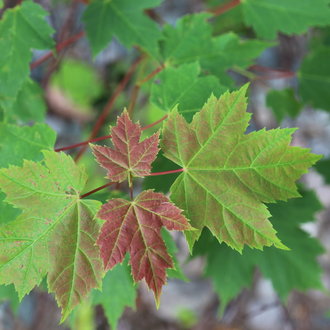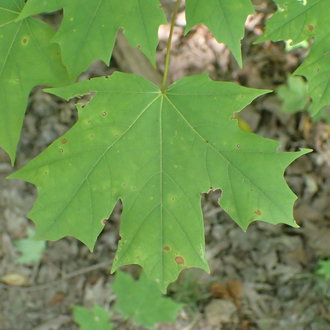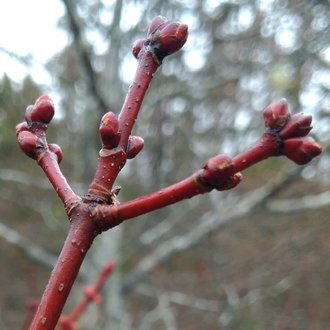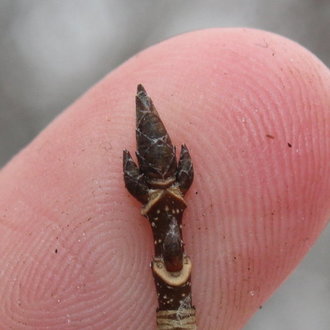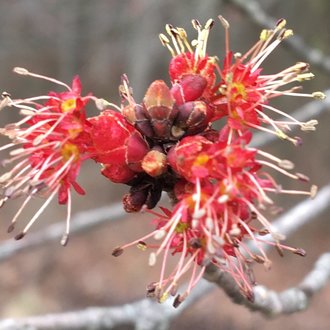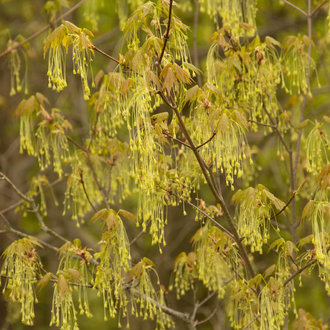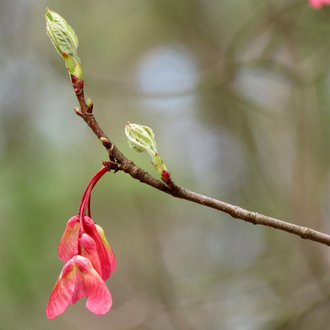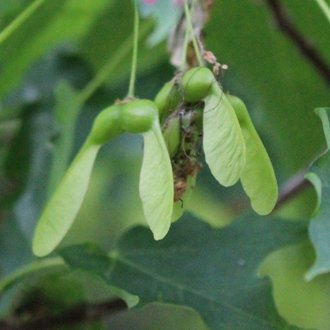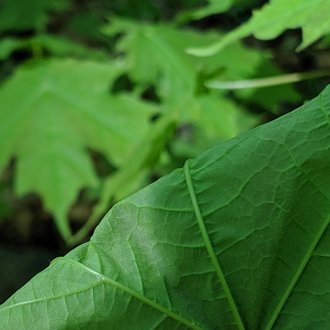Red Maple vs Sugar Maple
Red maple has a highly variable leaf shape, and some can look similar to sugar maple, but they are easily distinguished by serrations and the color of the leaf underside. In winter, buds are easily distinguished. Samaras are also distinctive.
Red Maple (Acer rubrum) | Sugar Maple (Acer saccharum) |
The most abundant tree species in North America, and a habitat generalist, native to a wide range across the eastern part of the continent. | A shade-tolerant deciduous tree of the northeast, often associated with climax communities on rich, mesic sites. |
Leaf margins serrated. Serrations fine and irregular. Photo © Parks Canada / Parcs Canada / Cape Breton / Cap-Breton, Public Domain. | Lobes pointed, but leaf margins smooth (not serrated) between points, with U-shaped regions in larger spaces between lobe tips. Photo © Yann Kemper, Public Domain. |
Buds conspicuous, plump, rounded, and red; side buds as large as terminal buds, and angled outward. Photo © Ben Armstrong, CC BY 4.0. | Buds more discrete, sharply pointed, and brown. Side buds much smaller than terminal buds and angled in the direction of the twig. Photo © Quinten Wiegersma, CC BY 4.0. |
Flowers well before leafing out. Flowers more erect, vibrant red with some yellow. Photo © Mark, CC BY 4.0. | Flowers while leafing out. Flowers dangling, yellow-green. Photo © Christine McAnlis, CC BY 4.0. |
Samaras bright red, usually well-formed when leaves are leafing out. Photo © Katja Schulz, CC BY 4.0. | Samaras green with large round seeds; not yet formed when tree is leafing out. Photo © Rob Foster, CC BY 4.0. |
Underside of mature leaves sometimes much lighter in color than top. Photo © Reuven Martin, Public Domain. | Underside of mature leaves similar in color or only slightly lighter than top. Photo © Nate Martineau, CC BY 4.0. |
References & External Resources
These short lists show only links helpful for ID. For a complete list of references and resources also covering other aspects of ecology, visit the links section of the full article on each plant, which is the first entry here.



